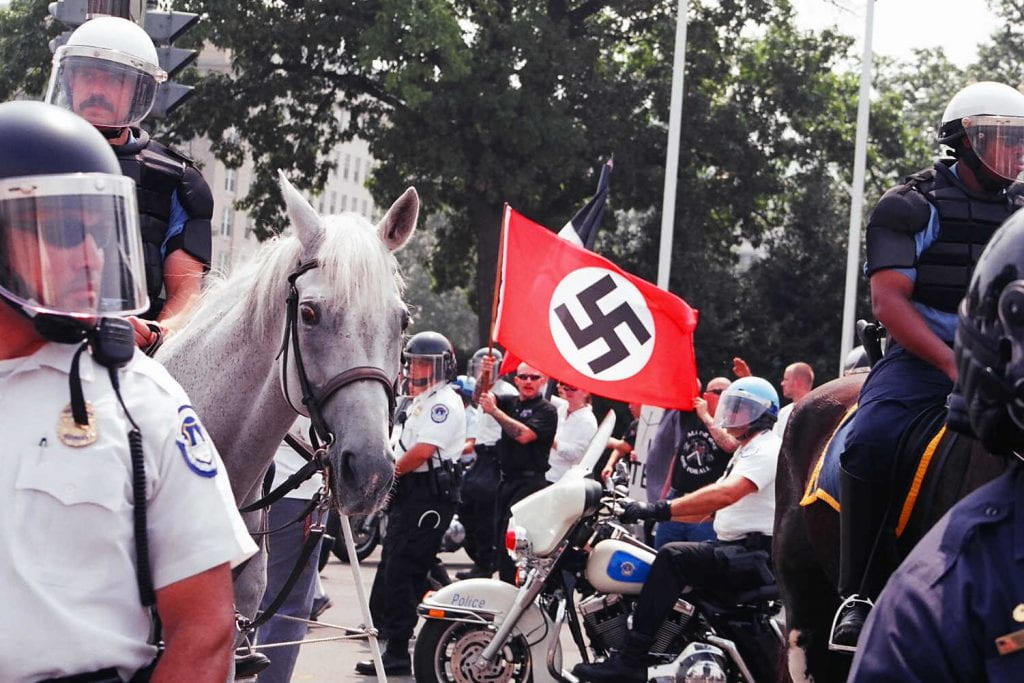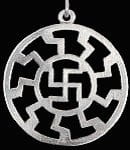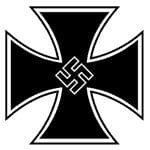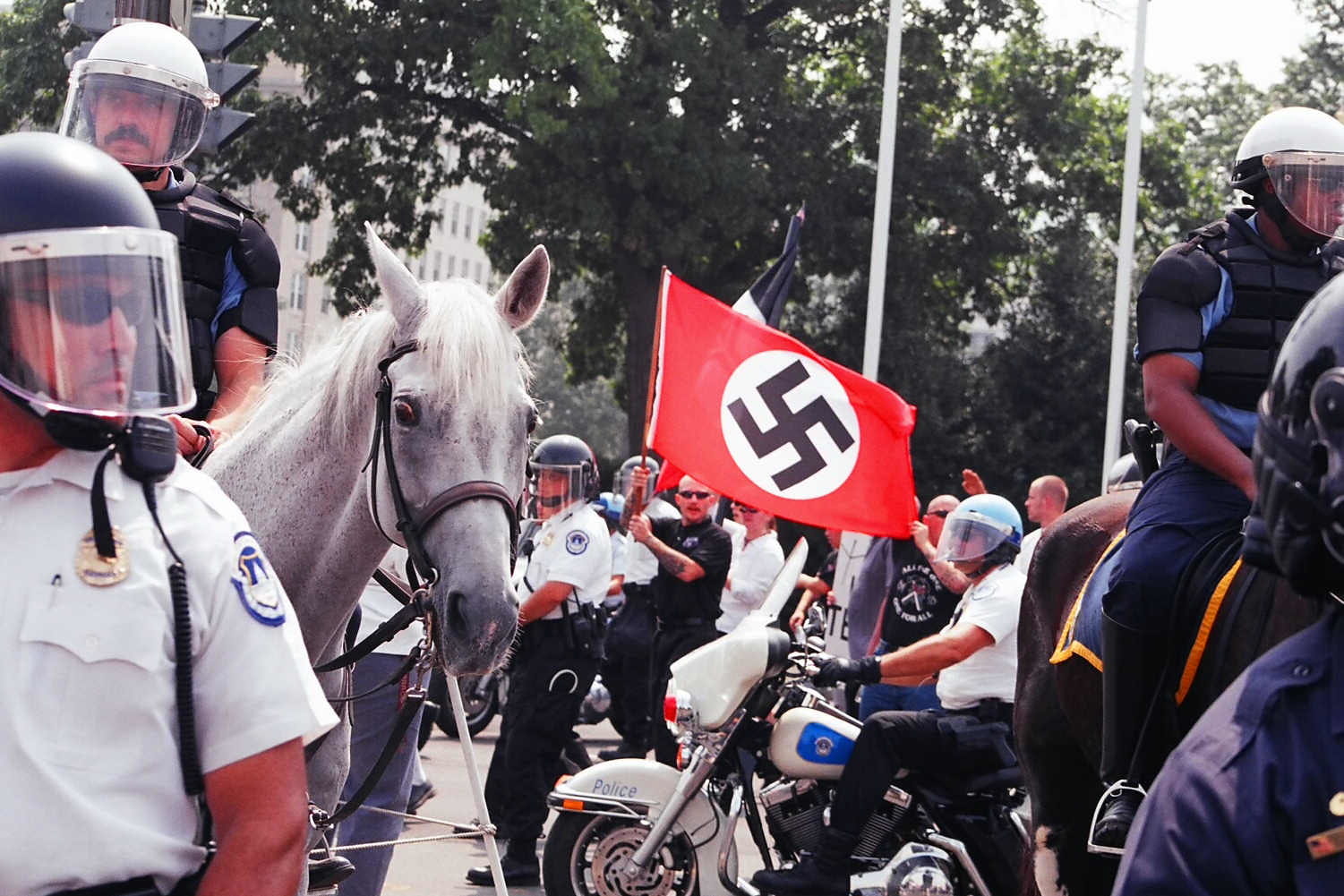
Hate symbols are hiding in plain sight. They are used to send messages, intimidate, and represent alt-right, white supremacist groups. Pretty much everyone around the world is able to recognize the swastika as a symbol of oppression and hate. However, hate groups have recognized how the swastika withdraws an immediate response of disgust and criticism from society. Therefore, hate groups have evolved to utilize symbols that perpetuate a very similar type of racism and hate as the swastika but are subtler and not as recognizable. Because of this, hate groups have been able to mobilize, protest, and distinguish their members from others without fear of retribution aimed at their symbols. This article serves as a baseline explanation of popular hate symbols within hate groups with the goal to make these symbols more recognizable and therefore less powerful.
People who utilize hate symbols in modern times work to ensure their ideologies are recognizable to likeminded people but not recognizable to the point that they might be criticized. Most of the time, neo-Nazis have three reasons to use a hate symbol: 1. They want to openly announce their support of the group/ideology 2. They want to intimidate or 3. They intend the symbols to be messages to other neo-Nazis. An example of secret messages would be the use of the number “1488.” 14 refers to the 14 words of a slogan utilized by white supremacists and 88 refers to “Heil Hitler” with H being the 8th letter in the alphabet. A popular way of hiding this message in social media posts, pieces of clothing, or on posters is to represent it on a pair of dice.

The sonnenrad, or black sun, has long been a symbol of the neo-Nazi movement. While the symbol originates from an ancient Norse representation of the sun, more modern context shows us how the sonnenrad was a symbol of Hitler’s SS and after the fall of the Nazis in Germany, a symbol of the remaining Nazi supporters. Many hate symbols, including the swastika, have been appropriated from ancient cultural symbols in order to encourage dangerous racist narratives. The head of the SS, Heinrich Himmler, had a sonnenrad mosaic installed in the floor of the SS headquarters and included the SS’s insignia within the sonnenrad to represent the “Aryan race” the Nazis were intent on creating. Contemporary neo-Nazis have revived the symbol. While the swastika is known around the world as a hate symbol and is illegal in certain countries, the sonnenrad is not so well known despite the similar hateful connotations it represents. A manifesto created by Brenton Tarrant displayed the sonnenrad prominently on the cover. In March of 2019, Tarrant massacred 51 members of two Christchurch mosques. The sonnenrad has become alarmingly disseminated, with the symbol being used in memes and social media posts in support of alt-right leaders around the world.
The combination of the colors red, white, and black is another example of a neo-Nazi symbol. These colors were originally the colors of the German Empire that fell after World War I. Hitler deliberately used these colors when creating the Nazi flag, using propaganda and the colors to try and draw Germans into the Nazi agenda by connecting the imperialism of the German Empire and the Nazi regime. Hitler himself stated that the red represents the “social idea of the movement,” the white represents the movement’s roots in nationalism, and the black is for the swastika, or “the mission of the struggle for the victory of the Aryan man.” Since Hitler, neo-Nazi groups have revived the hateful symbolic meaning of the colors, strategically placing them to show allegiance to white nationalist ideologies.
Here is a short list of other common hate symbols:
- A white nationalist group named the Detroit Right Wings claimed and altered the logo of the Detroit Red Wings. The altered logo contains a Nazi SS symbol, the sonnenrad, and prints it on shields and t-shirts.

- The valknot, or “knot of slain,” is an ancient Norse symbol used to represent the underworld. This symbol has also been appropriated by white supremacists. These groups use the valknot to demonstrate a connection to ancient Nordic culture and in some cases to represent their willingness to die in battle for Odin, a Norse god.
- The kekistan is an almost exact replica of the Nazi war flag, with the Kekistan logo replacing the Nazi swastika and the color green replacing the large swath of red originally found on the flag. It is the national flag of a fictional place, used to show allegiance to the alt-right and many of Hitler’s ideologies.

- The “OK” hand gesture was once an innocent gesture used in general society as a gesture to mean “okay,” incorporated in American Sign Language, and utilized in Hindu and Buddhism as a symbol of “inner perfection.” However, starting in 2017, the symbol started being used to represent white power. It is flashed in social media posts and videos, most infamously used by Brenton Tarrant. Tarrant flashed the symbol in a courtroom in 2019 after being arrested for murdering 50 people at mosques in New Zealand.
- Vanguard America, a prominent white nationalist group, uses the phrase “blood and soil” as an alt-right nationalistic slogan. In this context the definition is not far removed from the Nazi definition, just more directed towards the United States instead of Germany. The soil refers to “american soil” with blood referring to “white blood.” The phrase attempts to draw hereditary connections between the land of the United States and white people, completing negating the fact that many indigenous peoples lived and survived on the land of the United States for centuries before white people dared to grace the land with their presence.

- The Iron Cross was a German military medal that has centuries of history. However, the Nazi regime claimed the medal and utilized it, placing a swastika within the metal of the cross, thereby making it a Nazi symbol. After World War II, the Iron Cross was primarily discontinued, however white supremacists, alt-right groups, and neo-Nazis have continued to use the Iron Cross as a symbol for their racist beliefs.
The Nationalist Socialist Movement (NSM) is one of the largest neo-Nazi organizations in the United States. The group is not shy about their respect and support for Adolf Hitler and will go so far as to wear Nazi uniforms with swastika armbands to protests. This group has roots in the American Nazi Party, founded in 1959. The NSM chose the Othala Rune as the new sign of alt-right white supremacy. The Othala Rune was originally an ancient symbol rooted in ancient Germanic cultures. It was appropriated by the Nazi movement in Germany to represent the “pure Aryan race.” It was chosen by the NSM after they felt the swastika was too recognizable and wanted something “more mainstream” to take on a very similar meaning as the swastika.
On January 6th 2021, the United States saw an attempted coup occur as supporters of former President Donald Trump stormed and raided the Capitol Building. Many of the symbols discussed above were prevalent on t-shirts, hats, and even skin. The QAnon supporter Jake Angeli, whose picture has been widely circulated since the event, had a variety of alt-right hate tattoos, including the Valknot. The neo-Nazi symbols themselves were enough to stem the rumors that anti-facist groups like ANTIFA were responsible for the attempted coup. However, outside of scholarly news articles, there was not much discussion about the symbols seen on flags, clothes, and skin on January 6th. In the case of modern hate symbols, their relative secretiveness gives them power. It is important to be able to recognize these symbols to keep marginalized groups safe and to hold people accountable who may support the meanings behind these symbols. For more information on the symbols outlined above and others, visit the ADL Hate Symbols Database.

